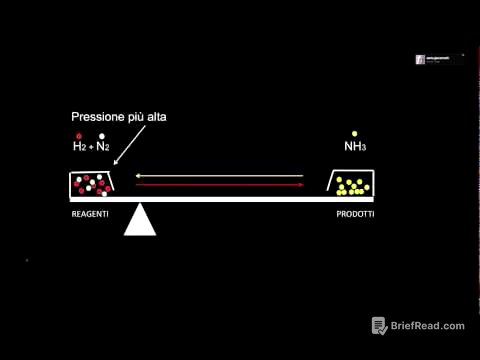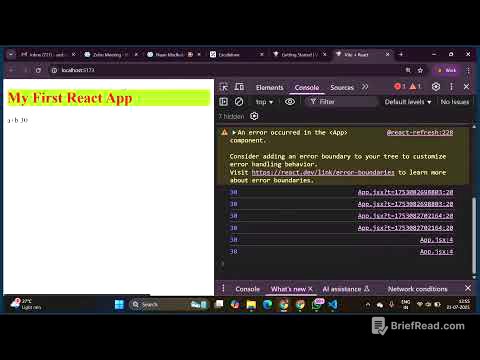TLDR;
This video provides a comprehensive grammar course designed to improve performance on the PTE Academic exam and in general English usage. It covers essential grammar topics, including:
- Identifying nouns, verbs, adjectives and adverbs.
- Understanding and applying tenses.
- Subject-verb agreement.
- Active and passive voice.
- Articles and apostrophes.
The course includes definitions, examples, shortcuts and practical applications for reading and writing fill-in-the-blank questions.
Introduction to the Grammar Course [0:00]
The video introduces a comprehensive grammar course designed to improve performance in PTE Academic and general English proficiency. The course addresses common problems in understanding nouns, verbs, adjectives, adverbs, tenses, subject-verb agreement, and active/passive voice. The presenter encourages viewers to watch the entire video and take notes, highlighting the usefulness of grammar in PTE exam sections such as reading, writing, and listening.
Identifying Nouns, Verbs, Adjectives and Adverbs [4:23]
This section explains how to identify nouns, verbs, adjectives and adverbs, which is crucial for solving reading fill-in-the-blanks in the PTE exam. A noun is defined as a person, place, or thing that can be used with the word "the". A verb represents an action and can be identified by using the word "to". An adjective describes the characteristics of a noun and can be used with "he is", "she is", or "it is". Adverbs modify verbs or adjectives and often end in "-ly". The presenter advises practising identifying these parts of speech in various texts.
Nouns Deep Dive [5:53]
Nouns are identified by their ability to logically follow the word "the". Examples include "the boy", "the city", and "the development". Words that don't fit this pattern, such as "the eat" or "the develop", are not nouns. This identification skill is presented as a shortcut for reading fill-in-the-blanks, where only noun options should be considered after "the".
Verbs Deep Dive [7:21]
Verbs are identified by their ability to logically follow the word "to". Examples include "to eat", "to sing", and "to develop". This method helps distinguish verbs from nouns, such as "development" (noun) versus "develop" (verb). Additionally, verbs can be identified by using "you can" before the word, such as "you can eat" or "you can sing".
Adjectives Deep Dive [9:09]
Adjectives are words that describe the qualities or characteristics of a noun. They can be identified by using the phrases "he is", "she is", or "it is" before the word. Examples include "he is good", "she is happy", and "it is tall". Adjectives can appear before or after a noun, such as "good monkey" or "monkey is good".
Adverbs Deep Dive [11:40]
Adverbs modify verbs or adjectives, adding detail about how an action is performed or to what extent a quality is present. They often end in "-ly", such as "quietly" or "efficiently". Adverbs typically come after a verb or before an adjective. For example, "the boy eats quietly" or "the girl is very sad". Identifying adverbs can be simplified by looking for words ending in "-ly" in fill-in-the-blanks.
Identifying Parts of Speech: Practice [14:42]
The presenter provides a practice session to identify whether given words are nouns, verbs, adjectives or adverbs. Words like "word", "house", "severe", "severity", "shape", "act", "format", "geology", "mask", "smile", "television" and "authorize" are classified using the "the", "to", and "it is" tests. The presenter encourages viewers to pause the video and classify the words themselves before checking the answers.
Implementing Parts of Speech Knowledge in Reading Fill-in-the-Blanks [17:15]
The video demonstrates how to apply the knowledge of nouns, verbs, adjectives and adverbs to solve reading fill-in-the-blanks in the PTE exam. The presenter underlines words in a text and identifies their parts of speech, explaining that knowing the part of speech required for a blank can significantly narrow down the options and save time. For example, if a blank requires a noun, only options that are nouns should be considered.
Reading Fill-in-the-Blanks: Advanced Techniques [21:10]
The presenter advances the fill-in-the-blanks strategy by adding complexity and context. He explains that understanding the sentence structure and the relationships between words is crucial. For instance, after auxiliary verbs like "is", an adverb is likely to follow. He also highlights the importance of recognising apostrophes and their impact on the required part of speech.
Reading Fill-in-the-Blanks: Applying Knowledge with Options [25:45]
This section focuses on selecting the correct answer from given options in a reading fill-in-the-blanks question. The presenter uses the previously discussed techniques to identify the required part of speech and eliminate incorrect options. For example, if an adverb is needed, the option ending in "-ly" is likely the correct answer. The presenter emphasises that consistent practice with this method can significantly improve speed and accuracy.
Introduction to Tenses [29:26]
The video transitions to the topic of tenses, explaining that a solid understanding of tenses is essential for PTE success. The presenter promises to provide a comprehensive overview of tenses, followed by shortcuts and implementation strategies for reading fill-in-the-blanks.
Present and Past Tenses [29:50]
The presenter explains the basic forms of present and past tenses. The present tense uses the verb in its base form (V1), while the past tense uses the second form of the verb (V2). Present continuous tense uses "is/am/are + verb-ing", and past continuous tense uses "was/were + verb-ing".
Perfect Tenses: Present Perfect [32:15]
The present perfect tense uses "have/has + V3" and denotes experiences or transitions from past to present. It is used to indicate an event that happened in the past but still has significance in the present. The presenter differentiates between "I have taught English" (an ongoing experience) and "I taught English" (an action completed in the past).
Perfect Tenses: Past Perfect [37:51]
The past perfect tense uses "had + V3" and is used to clarify which of two past events happened first. For example, "When we went to the Palace, the show had started" indicates that the show started before they arrived.
Perfect Continuous Tenses [40:15]
The present perfect continuous tense uses "have/has been + verb-ing" and describes an event that started in the past and is still continuing. The past perfect continuous tense uses "had been + verb-ing" and describes an event that started in the past, continued for some time, and ended in the past.
Tenses: Shortcuts for Reading Fill-in-the-Blanks [44:35]
The presenter provides shortcuts for identifying tenses in reading fill-in-the-blanks. After "is/are/am/was/were", the verb will usually be in the "-ing" form. After "has/have/had", the verb will usually be in the V3 form. He introduces a mantra: after a noun, if nothing is there, use V1 or V2; if "is/was/are/am/has/have/had" is there, use V3 or verb-ing.
Tenses: Reading Writing Fill-in-the-Blanks Example [47:51]
The presenter applies the tense shortcuts to a reading writing fill-in-the-blanks question. By identifying the tense and applying the rules, the correct answers are selected. The presenter emphasises the importance of understanding the context and applying the rules consistently.
Introduction to Subject-Verb Agreement [51:41]
The video introduces the concept of subject-verb agreement, explaining that the verb must agree with the subject in number. If the subject is third-person singular (he, she, it), the verb in the present tense adds an "s".
Subject-Verb Agreement: Detailed Explanation [53:25]
The presenter explains subject-verb agreement in detail, defining first, second and third person. First person is "I" (singular) and "we" (plural). Second person is "you" (singular and plural). Third person singular is "he", "she", "it", while third person plural is "they". The rule is that in the present tense, if the subject is third person singular, the verb adds an "s".
Subject-Verb Agreement: Acting Nouns and Model Verbs [57:31]
The presenter introduces the concept of acting nouns, where the main noun determines the verb form. For example, in "The car which belongs to my mum and dad is good", the acting noun is "car", so the verb is "is". Model verbs (could, would, should, shall, may, might, ought) override subject-verb agreement, and the verb always takes the base form (V1).
Subject-Verb Agreement: Error Identification and Fill-in-the-Blanks [1:00:25]
The presenter demonstrates how to identify subject-verb agreement errors in a paragraph and how to apply the concept to solve reading fill-in-the-blanks. By identifying the subject and ensuring the verb agrees, the correct answers are selected.
Subject-Verb Agreement: Advanced Fill-in-the-Blanks Techniques [1:06:10]
The presenter provides more advanced techniques for solving fill-in-the-blanks using subject-verb agreement. He emphasises the importance of identifying the acting noun and applying the rules consistently.
Introduction to Active and Passive Voice [1:08:47]
The video introduces the concept of active and passive voice. In active voice, the subject performs the action (e.g., "He eats a pizza"). In passive voice, the object receives the action (e.g., "A pizza is eaten by him"). The presenter explains that understanding the difference between active and passive voice is crucial for reading and writing fill-in-the-blanks.
Active and Passive Voice: Detailed Explanation [1:10:31]
The presenter provides a detailed explanation of active and passive voice, including how to convert sentences from active to passive. The key is that in passive voice, the verb is always in the V3 form, and auxiliary verbs like "is", "was", "are", "were", "has been", and "had been" are used.
Active and Passive Voice: Fill-in-the-Blanks Examples [1:15:34]
The presenter applies the knowledge of active and passive voice to solve reading writing fill-in-the-blanks questions. By identifying whether the sentence requires an active or passive construction, the correct answers are selected.
Active and Passive Voice: Reading Writing Fill-in-the-Blanks Practice [1:16:54]
The presenter provides a practice session for solving reading writing fill-in-the-blanks questions using active and passive voice. The presenter emphasises the importance of understanding the context and applying the rules consistently.
Introduction to Articles: A, An, The [1:20:03]
The video introduces the concept of articles (a, an, the) and explains when to use each one. The presenter explains that "a" and "an" are used with singular countable nouns, while "the" is used with specific or unique nouns.
Articles: Countable and Uncountable Nouns [1:21:51]
The presenter explains the difference between countable and uncountable nouns. Countable nouns can be counted (e.g., rings, caps, shirts), while uncountable nouns cannot (e.g., sugar, salt, pepper). "A" and "an" are used only with singular countable nouns.
Articles: Indefinite and Definite Articles [1:24:00]
The presenter explains the difference between indefinite (a, an) and definite (the) articles. Indefinite articles are used when the noun is not specific, while definite articles are used when the noun is specific or unique.
Articles: Vowel and Consonant Sounds [1:24:57]
The presenter explains when to use "a" and "an" based on vowel and consonant sounds. "An" is used before words that start with a vowel sound (a, e, i, o, u), while "a" is used before words that start with a consonant sound.
Articles: Fill-in-the-Blanks Examples [1:29:10]
The presenter applies the knowledge of articles to solve fill-in-the-blanks questions. By identifying whether the noun is singular or plural, countable or uncountable, and specific or unspecific, the correct article is selected.
Introduction to Apostrophes [1:32:59]
The video introduces the concept of apostrophes, explaining that they are used to indicate possession or contraction. Possession indicates ownership (e.g., "the girl's hat"), while contraction is a short form of two words (e.g., "it's" for "it is").
Apostrophes: Possession and Contraction [1:34:56]
The presenter explains the rules for using apostrophes to indicate possession. For singular nouns, add "'s" (e.g., "the farmer's suicide"). For plural nouns ending in "s", add only an apostrophe (e.g., "the farmers' suicide"). After an apostrophe, a noun is expected.
Apostrophes: Fill-in-the-Blanks Examples [1:36:46]
The presenter applies the knowledge of apostrophes to solve fill-in-the-blanks questions. By identifying whether the sentence requires possession or contraction, the correct answer is selected.









